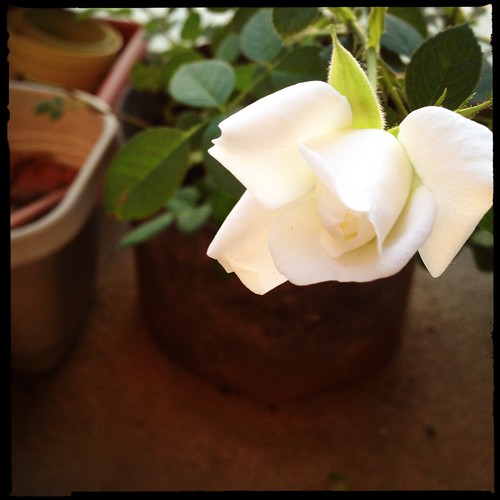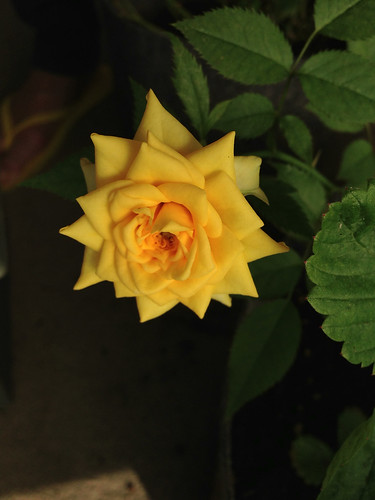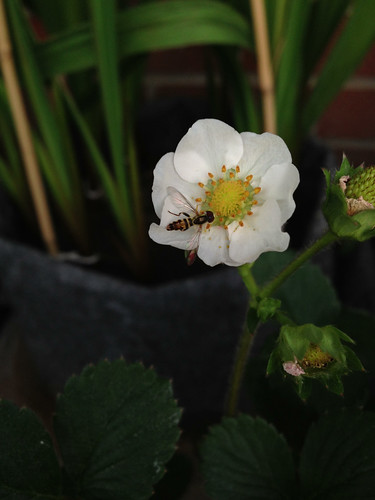I've planted a few varieties of bulbs in the spring so we may have some pretty flowers on the balcony to enjoy along side our potted veg. These included dahlias, daylilies, gladioli, and irises. A few daylilies appeared in early summer but they faded within a week, maybe a week and a half.
The dahlias and gladioli were all stalks and green foliage. I was beginning to accept that we would not see any flowers from this year but perhaps next year? But then I noticed signs of flowers about to emerge.
One of the varieties of dahlias I planted, the Bishop of Llandaff is supposed to be dwarf variety but as it turned out, it just continued to grow taller and taller. It is stands taller than TH but it's got flowers. Well, currently one has appeared. I can see buds of future flowers dotted around the tops of this particular dahlia. Unlike the other dahlias, it's foliage is dark. The color of the BoL is quite striking. You can't miss it even though it is over our heads.
The first dahlia to make an appearance is the White Fawn. It is dense with white petals that have hints of fresh green. The flower head is small and reminds me of pom-poms.
I have two other dahlia varieties. I don't know if they will make an appearance. One of the stalks was taken down because one of the tomato plants was knocked over by strong winds. Luckily the stalk continues to produce leaves. And maybe it has enough strength and energy to produce flowers.
The mini roses I acquired last year have made a strong come back. They have been most rewarding and are among TH's favorites. The pink/mauve roses is the best at producing roses.
The white mini rose bush has also done well but isn't a strong producer of flowers as the pink one. And when a white rose does bloom, it's quite a sight!
The red one is the smallest of our mini rose collection and produces beautiful mini red roses. It's leaves are also tiny and dark compared with the other mini rose bushes.
The yellow mini rose bush surprised us with a resurgence. It was down to one plant and the chances of its survival didn't look positive. It had barley any leaves and it looked quite sad. It fought on though because it's producing deep yellow mini roses! This mini rose bush is also in bed with a strawberry plant too. I recall throwing a dried up strawberry into its pot. I didn't think it was going to take. I love that they are growing together.
I also planted some gladiolu bulbs. I didn't get the ruffled petal variety. Instead, I prefer the simple white petals accented with a deep purple or crimson center. They are supposed to be fragrant but I wasn't able to detect a scent. In any case, they're a nice addition to the balcony garden. I honestly didn't think the gladioli were going to show up. One day, while I was surveying the plants, I noticed that something had pierced the tall blade like leaves and realized that it was the stem that was emerging from the bulb. And then I noticed the bobbed heads of flower heads.
I also planted some gladiolu bulbs. I didn't get the ruffled petal variety. Instead, I prefer the simple white petals accented with a deep purple or crimson center. They are supposed to be fragrant but I wasn't able to detect a scent. In any case, they're a nice addition to the balcony garden. I honestly didn't think the gladioli were going to show up. One day, while I was surveying the plants, I noticed that something had pierced the tall blade like leaves and realized that it was the stem that was emerging from the bulb. And then I noticed the bobbed heads of flower heads.




















